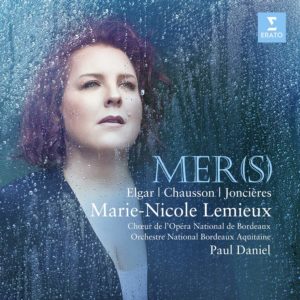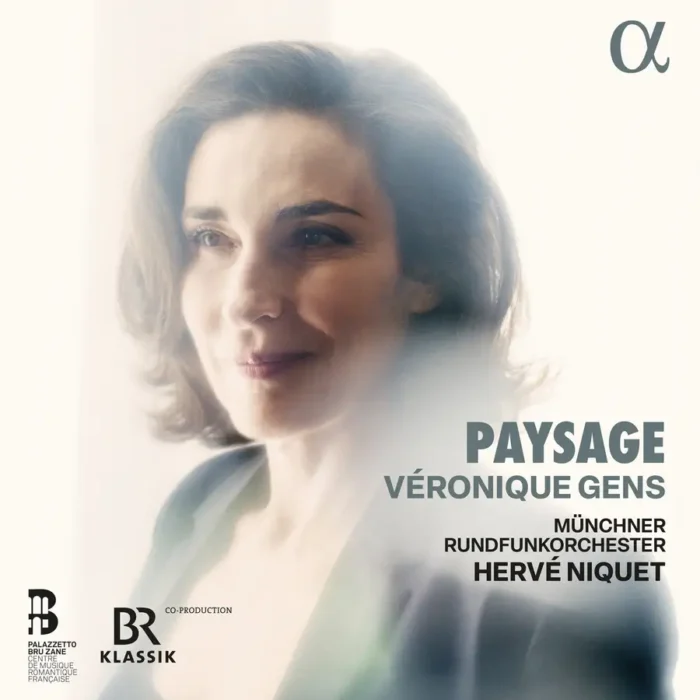
Off the Beaten Track: Marie-Nicole Lemieux’s ‘Mer(s)’
By Chris RuelMusic is a rush. I can’t speak for anyone but myself, but when something unexpected hits my ears, stirs up emotion, invokes thoughts of the past, sends a lightning bolt up my spine and rattles my body in a way that causes the person next to me on the train to wonder if I’m having some sort of fit, I want to share that experience. It’s a “Hey, you’ve got to hear this!” moment.
I share my encounters with music all the time. I do it here on OperaWire when I review a show, and I do it informally with my friends and colleagues. Yes, I love and write about opera and the world of classical voice, but my musical tastes are multi-dimensional though a consistent bent leaning toward the dramatic and filmic no matter the genre. I’ll chalk this up to gobbling film scores from an early age.
My first exposure to classical vocal music—outside of high school choir—was Mozart’s “Requiem.” I can’t altogether remember how that came about. I was fortunate to have the opportunity to take a music history course while in high school, maybe it was then. The point is, the class exposed me to much of the Western canon. I grew increasingly attached to big works. From Mozart’s “Requiem,” I went on to Verdi’s. With my mind blown, I began a journey, finding music I liked and music that didn’t quite hit the spot.
Opera and art song are more recent passions. If you’ve read my stage reviews, I examine textual meaning. This stems from my schooling as a literature major. More so, however, I attempt to place the reader into my seat and experience what I felt, thought, and how the total performance did or didn’t move me. I look not only at “what it means” but also “what I felt.” “Off the Beaten Track” extends my desire to share, to let you into my personal interactions with recordings. Is it subjective? Absolutely! My goal is not to review. My writing colleagues here at OperaWire do a bang-up job of that. I want to be that friend who says, “This album moved me. It got under my skin and I can’t stop hearing it or thinking about it. Give it a listen.”
So, let’s kick it off. What’s coming through my headphones that I want to tell you about this month? The sounds of the sea.
Let’s Go to the Beach
There are those who love to head for the hills for their vacations. Me? Not so much, though I enjoy a good hike in fall when the sun in its golden glory lights the foliage like a fire. But nothing beats the sight and sound of the surf smacking the sand or rocks with each roll and tumble.
Marie-Nicole Lemieux’s “Mer(s)” released in October 2019 by Erato, and featuring Paul Daniel and Orchestre National Bordeaux Aquitaine, sent me to that happy place from the first track, “Sea Slumber.” “Mer(s)” is an album of art song, featuring three cycles; the first a five-song set written by Sir Edward Elgar entitled “Sea Pictures.” It’s here where I will linger.
With “Sea Pictures,” Elgar, just as he does with his “Enigma Variations,” taps into my filmic sensibilities. Listening to the opening track, “Sea Slumber Song,” I cannot help but envision the sun deeply set on the western horizon as the moon dangles in the darkened east. Descending strings paint this picture, followed by Lemieux’s delicate, breathy opening, singing of sea birds slumbering.
Again, the strings descend, this time followed by a solo harp glissando—the wave breaking upon the shore, or perhaps the stars blinking their eyes, awakening for the night. And so, the rolling continues throughout the piece, undulating in dynamics with the intermittent rumble of timpani. These rumbles aren’t stormy, rather, they are the voice of larger swells breaking upon the shore. As Lemieux’s contralto rides the crests and troughs, listen as she drops to the bottom of her range towards the end of the piece. “Sea Slumber Song” is a lullaby of remarkable beauty. Close your eyes. This is music that’s meant to be felt. Hush. Hush. The sea is speaking, whispering goodnight.
The following song in the cycle is “In Haven (Capri), its text written by Elgar’s wife, Alice. This is a jauntier number, belying the darkness of the text. The woodwinds take a more prominent role. They are the prow of the boat slipping across the deep, pushing the strings in their wake. Though more chipper in tone, “In Haven (Capri)” addresses the storms that stir not just the waters, but life. What can withstand the beating of the angry sea? “Love alone will stand.” “Love alone will last.” “Love alone will stay.”
“Sabbath Morning at Sea” with text penned by Elizabeth Barrett Browning takes us within the storm; a ship goes down, the mighty deep lays claim to what is hers, taking souls with wood and pitch alike. Brass steps to the forefront. Lemieux’s voice and the timbre of the horns match, doubling the vocal line. The opening reintroduces the themes from “Sea Slumber Song.” At times, Elgar quotes from “Enigma” with stately surges. “Sabbath Morning at Sea” is resplendent with the Barret Browning’s Romanticism. Though sung in English—as are all the songs in the “Sea Pictures” cycle—this one, in particular, is best appreciated with Barrett Browning’s text in front of you.
The fourth song of the cycle, “Where Corals Lie,” hops with syncopation and slows at the end of each stanza with a colla parte measure—a musical passage in which the orchestra follows the lead of the singer. The tempo slows and the strings gently back Lemieux. As “Where Corals Lie” moves toward its conclusion, the oboe dives in, creating a rippling, playful line before an extended colla parte rides smoothly to the shore.
The final song of the “Sea Pictures” cycle is “The Swimmer,” the text of which is a poem by Australian poet Adam Lindsay Gordon. The piece encompasses all the magic of the sea whether it be its majestic, imposing power: “A grim, grey coast and seaboard ghastly… Where the battered hull and broken mast lie…” or, hearkening back to “Sea Song Slumber” where “… skies were fairer and shores firmer—the blue sea over the bright sand rolled; Babble and prattle, and ripple and murmur, Sheen of silver and glamour of gold…” “The Swimmer” rolls from turbulent to gentle to majestic; the music driving the song forward like a swimmer riding the crest of a wave. At around the 5:15 mark, Lemieux lets her voice loose, the contralto sailing into the top of her range before the final swells roll, crash, and recede.
The balance of “Mer(s)” comprises three songs from Ernest Chausson’s “Poème de l’amour et de la mer” (Poem of Love and the Sea), and four pieces from Victorin de Joncières “La Mer.” Each adds to the allure of the album. My focus on Elgar’s “Sea Pictures” in no way diminishes these, rather it is Elgar’s work that coaxes the listener into the water, just as I invite you to enjoy this month’s “Off the Beaten Track” discovery.
Categories
DVD and CD Releases


